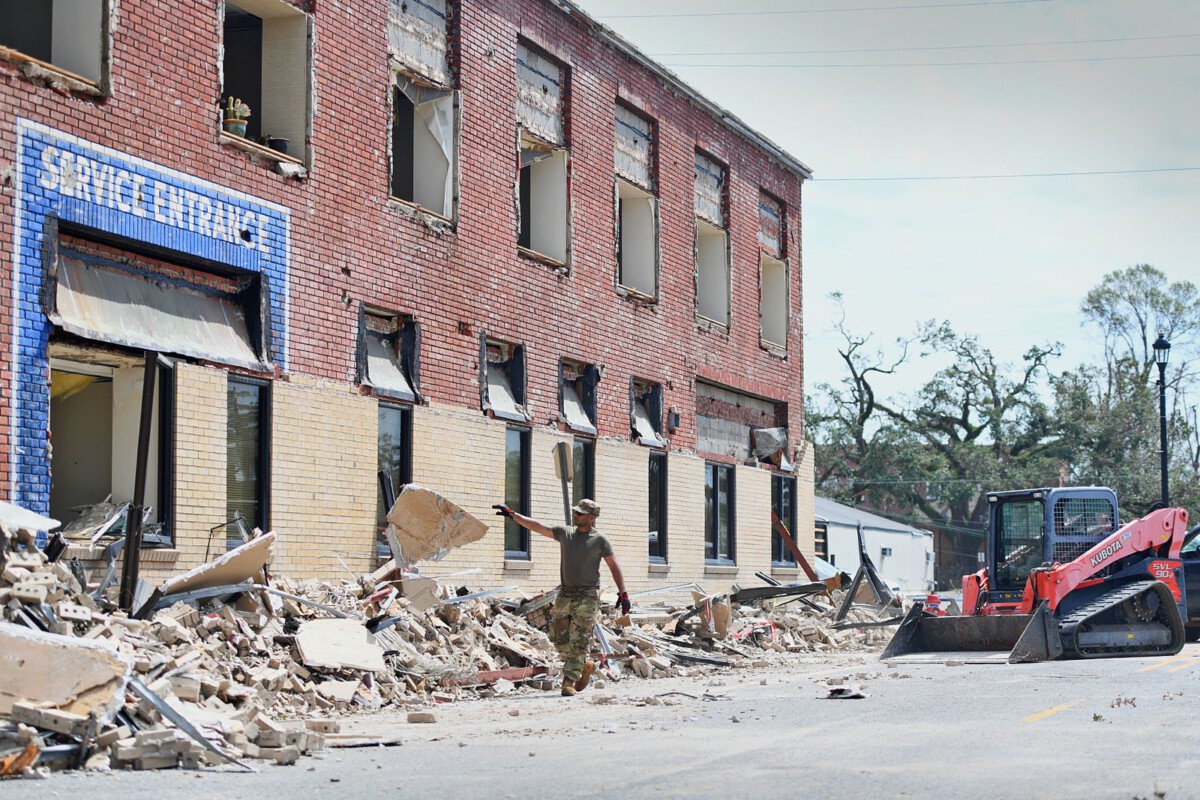The Sacking of Lawrence, Kansas – America’s Bloodless Rehearsal for Civil War

Picture this: On May 21, 1856, proslavery men attacked and looted the antislavery town of Lawrence, Kansas, but here’s the kicker – only one person died in the entire attack, and he was killed by a falling brick. What made this moment so crucial wasn’t the death toll, but what happened next. The two events were paired and dramatized by the national media, constituting turning point in the lead up to the Civil War. Free-State restraint was short-lived, as militant abolitionist John Brown was so aroused by the Lawrence-Sumner bulletin that he retaliated by killing five proslavery men on May 25, 1856, in what became known as the Pottawatomie Creek Massacre. The destruction of printing presses and a hotel somehow triggered a chain reaction that would lead to the bloodiest conflict in American history. Although the proslavery press downplayed the event as abolitionist sensationalism, the Sack of Lawrence, together with the caning of Charles Sumner, confirmed Republican fears of a violent “Slave Power” conspiracy. Think of it like the first domino falling – except this domino was made of molasses and fury.
The Great Molasses Flood – When Sweet Turned Deadly

You’ve heard of natural disasters, but what about a molasses disaster? The Great Molasses Flood, also known as the Boston Molasses Disaster, was a disaster that occurred on Wednesday, January 15, 1919, in the North End neighborhood of Boston, Massachusetts. A large storage tank filled with 2.3 million U.S. gallons of molasses, weighing approximately 13,000 short tons burst, and the resultant wave of molasses rushed through the streets at an estimated 35 miles per hour, killing 21 people and injuring 150. Don’t let the phrase “slow as molasses” fool you – this stuff moved faster than most cars of the era. The Harvard study concluded that the molasses cooled and thickened quickly as it rushed through the streets, hampering efforts to free victims before they suffocated. Many laws and regulations governing construction were changed as a direct result of the disaster, including requirements for oversight by a licensed architect and civil engineer. The disaster fundamentally changed how America builds its infrastructure. The event entered local folklore and residents reported for decades afterwards that the area still smelled of molasses on hot summer days.
Operation Wetback – America’s Forgotten Mass Deportation

Here’s a moment that sounds like it came straight out of a dystopian novel, but it actually happened in 1954. In 1954, the federal government carried out one of its first mass deportations of Mexican immigrants from the U.S. Operation Wetback, as it was known, ended up separating parents from their children, stranding deportees in the deserts of northern Mexico without food or water, and damaging the U.S.’s reputation at home and abroad. The name itself tells you everything about the attitudes of the time. For decades prior, the southwestern borderlands had prospered under a more fluid, humane and practical definition of boundaries, driven in large part by the wants and needs of the blended, binational border communities. In deference to these local interests, the federal government resisted engaging in draconian deportation measures. But economic fears changed everything. These reservations fell by the wayside as a wave of anti-Mexican animus, triggered by an economic recession, led the Immigration and Naturalization Service to adopt a highly militarized approach to immigration law enforcement, with Operation Wetback at its center. This forgotten chapter established a precedent that would echo through American immigration policy for decades to come.
The Birth of Franklin State – America’s Lost 14th Colony

Ever heard of the State of Franklin? Most people haven’t, but for four years, it was as real as any other state. At the close of the American Revolution, the newly formed U.S. Congress was deep in debt. In 1784, the province of North Carolina voted to cede 29 million acres of land between the Allegheny Mountains and the Mississippi River to Congress to ease its financial troubles. But here’s where it gets interesting – the settlers didn’t want to wait around for Congress to figure things out. They declared independence and created their own state, complete with its own constitution, governor, and legislature. The would-be state lasted from 1784 to 1788, caught between Cherokee resistance and congressional indecision. The U.S. government had two years to accept responsibility for the area; however, in the meantime, western settlements on this land feared that they would be left to handle the nearby Cherokee people alone. Franklin’s brief existence showed how fragile the early American union really was and how easily new states could have emerged from the chaos of the post-Revolutionary period.
Sir Francis Drake’s Forgotten California Claim

Long before the Gold Rush, California almost belonged to England. Sir Francis Drake, the English sea captain and explorer under Queen Elizabeth I, claimed an area of land on the west coast of North America in 1579. His claim was valid by sixteenth century standards. He had obtained consent from local natives, and he was the first European to discover the place, but as it turned out, the Crown wasn’t much interested in the Pacific side of the New World. Imagine how different American history would be if the British had followed through on Drake’s claim. By the time the twentieth century rolled around, the event had been mainly forgotten and achieved legendary status among historians until 1936, when the discovery of an artifact in San Francisco Bay proved Drake’s visit and the British claim on California, or New Albion. By the way, in October 2012, the US government designated a site on the Point Reyes Peninsula as Drake’s landing place and a historic landmark. The discovery of this artifact was like finding a treasure map to an alternate reality where Hollywood might have had British accents.
The Trinity Test – The Day America Became Unstoppable

July 16, 1945, is a date that should be burned into every American’s memory, but it often gets overshadowed by Hiroshima and Nagasaki. When it detonated – the first atomic explosion since creation – it immediately made the United States the indisputable most powerful nation on earth. This wasn’t just about ending World War II – this was about reshaping the entire global order. The program had developed its own momentum and detonating a weapon had become almost inevitable. The war with Japan appeared to be unending, given the growing ferocity of Japanese resistance throughout the Pacific. American troops who had survived the brutal war in Europe faced the grim prospect of dying in Japan. The Soviet Army was poised in Germany, clearly not intending to withdraw from any of the lands it had overrun on its drive west. In that single flash in the New Mexico desert, America didn’t just win a war – it won the next fifty years of global dominance. The bomb used for the Trinity Test was similar in design to that which would be dropped on Nagasaki Japan one month later.
The Yorktown Surrender Snub – A Gesture That Defined American Dignity

Sometimes the smallest gestures carry the biggest meanings. When the British Army under the command of Lord Cornwallis marched out of their trenches at Yorktown where they had endured a three-week siege, their commander was not at their head to surrender them. He sent a deputy. Victorious General George Washington responded by appointing a deputy to receive the surrender, refusing to compromise American dignity. This wasn’t just about hurt feelings – this was about establishing America’s place in the world. Although not the last battle of the Revolutionary War, it has historically marked the end of the eight-year conflict, and Washington’s simple gesture marked what would come next. Washington’s refusal to accept a subordinate’s surrender from a subordinate established a precedent for American diplomacy that would echo through centuries. It was a masterclass in power dynamics disguised as good manners. This moment showed that America wouldn’t just win wars – it would win them with style and dignity intact.
The First Mobile Phone Call – The Day America Went Wireless

April 4, 1973, might seem like just another Tuesday, but it was the day America’s communication revolution began. On April 4, 1973, a then little-noticed event took place which affects Americans all day every day – the first mobile telephone conversation was completed. While everyone was focused on Watergate and the Vietnam War, Motorola engineer Martin Cooper was making history on a New York City sidewalk. That first call lasted just 30 seconds, but it launched a transformation that would make every American a walking communication center. Think about it – before this moment, if you wanted to make a phone call, you had to find a phone booth or go home. Now your phone is probably within arm’s reach as you read this. The date on which many events which changed America forever is often forgotten because the significance of the event isn’t realized until much later. This forgotten moment literally put the power of global communication in everyone’s pocket, changing how Americans work, love, and live.
The Birth of Television – September 3, 1928

September 3, 1928, is widely regarded as the birth date of television after Philo Farnsworth demonstrated his image dissector camera to the press on that date. While radio was still king and movies were just learning to talk, a young inventor in San Francisco was creating the device that would reshape American culture forever. Farnsworth’s demonstration showed the first electronic television transmission, but nobody could have predicted what this little box would become. Television would unite Americans around shared experiences – from moon landings to presidential debates to the latest sitcom. It would create a common culture that transcended regional differences and class lines. The date on which many events which changed America forever is often forgotten because the significance of the event isn’t realized until much later. This forgotten moment in a small San Francisco laboratory would eventually put the entire world in America’s living rooms and make every American a witness to history.
The Pottawatomie Creek Massacre – John Brown’s Point of No Return

Three days after the Sacking of Lawrence, John Brown decided he’d had enough of peaceful resistance. The Sacking of Lawrence roused him to a high pitch of excitement. He believed this outrage should be avenged and determined to strike a blow, to return violence for violence. With a party of seven or eight men, including four of his sons, he made a night trip down Pottawatomie Creek, where several pro-slavery settlers lived. On May 24, 1856, Brown and his men killed five pro-slavery settlers in cold blood. John Brown came not to aid his sons in their pioneer struggles nor to make a home for himself but because it seemed to him an opportunity to strike a blow at slavery. He hated slavery with an intensity that knew no bounds and gave all his mind and energy to warfare against it. This wasn’t just murder – it was the moment when the slavery debate moved from politics to warfare. Then began a four-month “reign of terror.” Several conflicts followed, among them the battle of Black Jack. Brown’s actions at Pottawatomie Creek transformed him from an obscure farmer into the most feared abolitionist in America, setting the stage for his eventual raid on Harpers Ferry and martyrdom.
The Great Railroad Strike of 1877 – America’s First Nationwide Labor War

Imagine if every major city in America simultaneously erupted in violent protests over working conditions. That’s exactly what happened in 1877, and most Americans have never heard of it. The Great Railroad Strike began with a simple wage cut but exploded into the closest thing to a revolution America had seen since 1776. Workers in Baltimore, Pittsburgh, Chicago, and dozens of other cities shut down the railroads – the lifelines of the American economy. Federal troops had to be called in to restore order, marking the first time the U.S. military was used to break a strike. Entire neighborhoods were burned, hundreds were killed, and thousands were arrested. The strike showed that America’s industrial workers had the power to bring the entire economy to a halt. It also revealed the growing divide between capital and labor that would define American politics for the next century. This forgotten moment established the pattern for labor conflicts that would shape American industry and politics well into the 20th century.
What strikes me most about these forgotten moments is how they all share something in common – they seemed small at the time but ended up changing everything. Did you expect that a falling brick in Kansas or a phone call in New York could reshape an entire nation?



